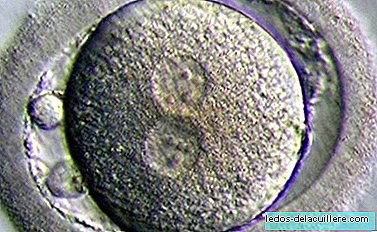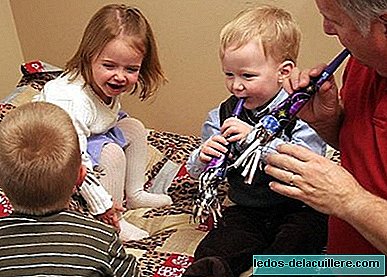
Yesterday I saw this news on television that was offered as a scientific curiosity. The music has probably accompanied many natural conceptions, but what had not been done so far is put music to the in vitro fertilization process. And with surprising results.
According to a study by the Institut Marquès de Barcelona, musical vibrations increase the chances that the sperm fertilizes the egg in the laboratory by up to 4.8%. It is a pioneering system in the world that has been presented at the congress of the European Reproduction Society (Eshre) in London.
Assisted reproduction has always sought that the conditions of the embryos in the laboratory reproduce those of the maternal uterus in temperature, darkness and CO2 levels, and this discovery is what the vibrations that produce the musical waves look for.
But do not go looking for the soundtrack to be more likely to conceive a baby naturally. Actually, the woman's body already produces similar vibrations without the need for music.
Microvibrations disperse the toxic products of in vitro cultures and prevent them from accumulating, in the same way that occurs naturally within the mother's womb with peristaltic movements, movements in the endometrium (endometrial waves, described by Dr. Van Gestel in 2007) who are responsible for placing the embryo in the right place.
If the oocytes remain static in the laboratory, the toxic products they release are more likely to be stored in the medium itself. To avoid this, some recent research has applied mechanical vibrations to the culture plates or has incorporated dynamic fluids into the culture media. In addition, these microvibrations would facilitate the more homogeneous distribution of nutrients that the oocyte needs.
The novelty of this work of the Institut Marquès is that music is used as a source of vibrations in human embryos during their in vitro development, a technique that, if proven useful, is easy to apply in any reproduction laboratory.
Any music serves
In the work entitled “Impact of exposure to music during in Vitro culture on embryo development”, which will be presented in the next few days, 985 fertilized ovules from 114 patients were analyzed. The ovules of each patient were randomly divided into two groups that were grown in two different incubators: one equipped with a speaker system and another conventional.
Those cultivated with music had a statistically higher fertilization rate, similar even with three different musical styles (pop, heavy and classical music). Using these three types of music, it was intended to measure possible variations according to the type of frequency, but no significant differences were detected.
All these results have been possible to verify thanks to the Embryoscope, an advanced incubator that allows you to observe the embryos 24 hours a day and select those that will be more suitable for implantation without having to take them outside, thus keeping the conditions of their surroundings, as if they were in the womb.
An embryo incubator with speakers inside it has been used for the first time in the history of assisted reproduction. In collaboration with a sound engineering consultant, the Embutology team at Institut Marquès devised a system capable of broadcasting music at 80 decibels inside the incubator 24 hours a day.
Anyway, we are seeing impressive advances in the field of assisted reproduction, and this Discovery of music as a promoter of the success of in vitro fertilization It will surely help many couples to fulfill their dream. An easy to apply technique, which can be easily reproduced in laboratories.












